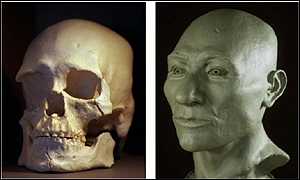By Peter d’Errico
This kind of “specimen” thinking is related to the doctrine of “Christian discovery:” the idea that non-Christian peoples are not fully human. In this view, the remains of indigenous peoples are not sacred like the remains of Christians. The historical development of academic and museum collections and research claims of “studying” Native American remains is rooted in this religious racism. Indigenous burial grounds are like rocks and ore--part of the earth, available for “discovery,” digging, collection and examination.
Sen. Dan Inouye, D-Hawaii, speaking in favor of NAGPRA’s passage in 1990, said: “When human remains are displayed in museums or historical societies, it is never the bones of white soldiers or the first European settlers that came to this continent that are lying in glass cases. It is Indian remains. … This is racism.”


No comments:
Post a Comment
Note: Only a member of this blog may post a comment.